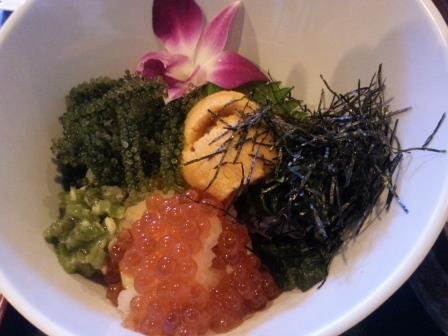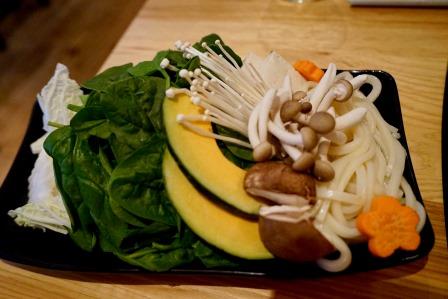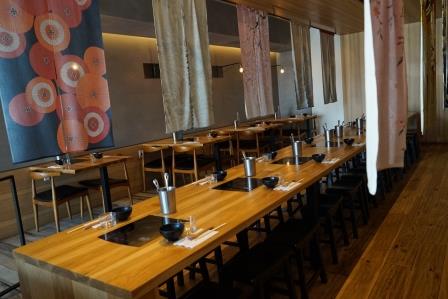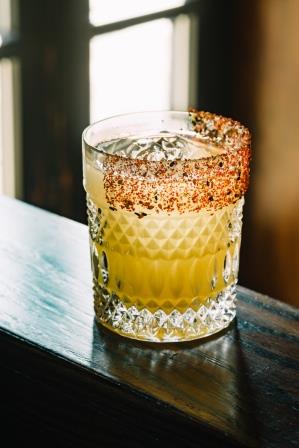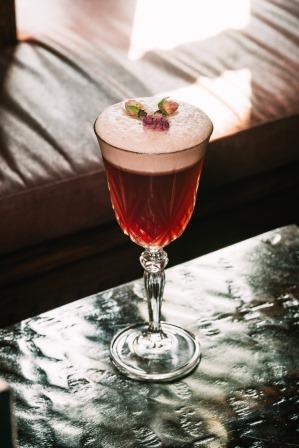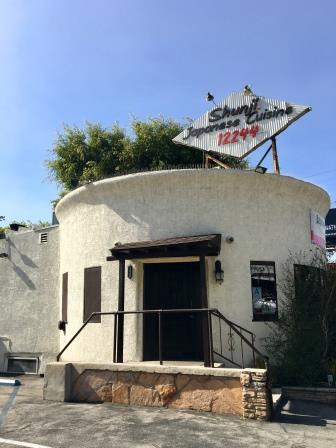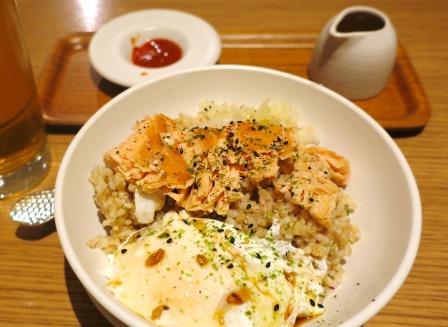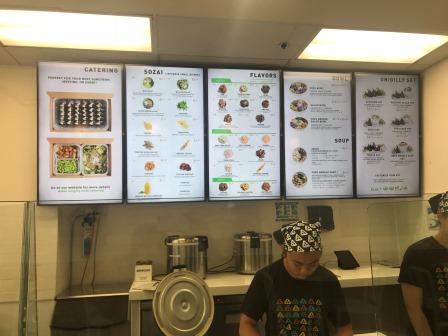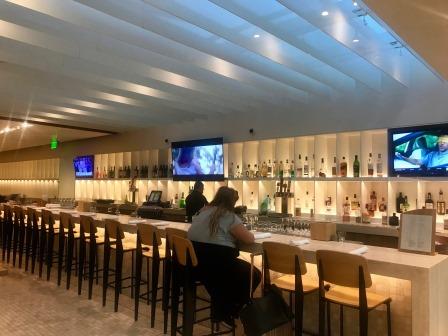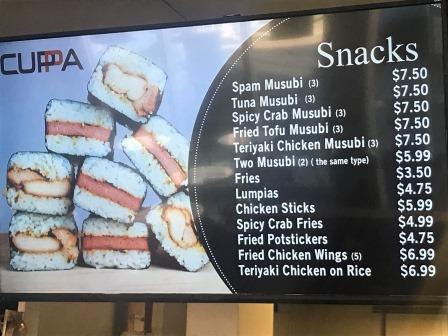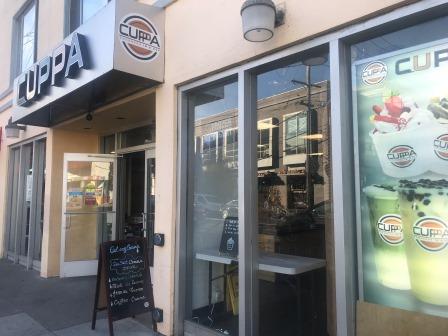A place you can enjoy various kinds of Japanese local sake and cuisine to the fullest
By Aya Ota
Its unique exterior; walls without windows, which make it impossible to peek in, and the thick and heavy door, both of which remind you of a kura (an old-fashioned Japanese building for storage); catches your eyes. This is “Sakagura East Village” which opened its door in September of 2018. As soon as you step inside, its gracious interior space decorated with plentiful of woods and stones, and a small Japanese garden-like space open up in front of you, and you feel as if you suddenly stepped into another world.
“I want to pursue the basics of Japanese food culture. I want people to fully enjoy various kinds of Japanese local sake with authentic Japanese cuisine,” says Bon Yagi, CEO of T.I.C. Group. This Group’s motto is “Enjoy Japan without Airfare (You can enjoy authentic Japanese tastes and ambiences without actually going there)”. From true traditional Japanese foods such as sushi and soba to more current foods like curry and ramen, street foods such as takoyaki and rice burgers, Japanese sake bars and tea salons, a total of as many as 13 different kinds of business models are forming their 20 plus Japanese restaurants under the operation of this Group. It would not be an exaggeration to say that he is the person who has been making the history of New York’s Japanese cuisine scene for the last 40 plus years. He was awarded for his contribution. He was selected as one of the 5 winners in the world for the Minister's Award for Overseas Promotion of Japanese Food in 2018.
This place is positioned as a sister restaurant of “Sakagura” in Midtown, which has been running as a popular restaurant where the high number of customers has been sustained for more than 20 years, however, this place deserves more than positioned as the second location of a popular restaurant because it is filled with its own charms.
The person, who creates gracious dishes with plentiful seasonal ingredients imported from all over Japan, is Masaru Kajihara, Executive Chef. He has been displaying his skills at notable kaiseki restaurants in both Japan and the US, such as “Suzuki” in Tsukiji, Tokyo, and “Kyoya”, a New York Times 3-starred restaurant. The “Sakagura Omakase Course” is offered only at the East Village location. The first item of the course, the “Pintxo with Truffled Chicken Pâté and Pepitas on Rice Bread”, specially baked bread with cooked rice mixed in the dough, surprises you. The “Carpaccio Medley” is accentuated with ponzu gelee and salted konbu. The “Wagyu Ishiyaki”, served with sizzling sound and aroma, pleases your five senses fully. To show their particularity about rice and miso, the Japanese cuisine basics, a kamameshi, cooked super high-quality rice from Uonuma, Niigata, with a lot of seafood such as scallops, Snow crab meat, etc., is served accompanied by miso soup using uki-koji miso and nukazuke style pickled vegetables to finish the course.
The Japanese sake selection of nearly 100 different brands from about 80 breweries have been carefully selected by Ryoma Miki, General Manger/sake sommelier. There is even a premium kind of sake you cannot find anywhere else. Recommended pairing with the omakase course is well accepted, and it impresses you even more when the sake that matches each dish perfectly is served in each appropriate container that matches the sake. Many sake connoisseurs visits “Sakagura” which carries the most selection of sake in New York, and they like to order unique brands such as Nama-zake, Kimoto, and Yamahai. The casks of sake piled up high by the wall at the deep end of the restaurant are donated by the breweries from all over Japan. This display shows their passion and aspiration to convey enthusiasms of brewery owners and masters of sake brewers of each brand, and to represent characteristics of each sake to as many people as possible.
A unique event called “Taste of Japan” which started to realize their hope to introduce Japanese local cooking specialties, is particularly noteworthy. Every other month, one of Japan’s regions is picked, and a special menu is created and offered featuring the picked region’s local specialty food and their local sake. For the first time of this regular event, Niigata prefecture was picked, and the highest-quality Uonuma-made rice and miso made by Hakkaisan brewery was used. They are planning to continue this event featuring prefectures such as Nagano, Hyogo, Miyagi, etc. in this respective order.
One big difference of this place from the Midtown location is its interior space. You can sit alone at the counter, you can enjoy and relax in a semi-private space with a friend, or you can even bring a group of 20 to use a private space for a large group. This place can accommodate almost any situation. There are plenty of spaces among the tables, and they are creating an ambience which draw a line between them and other casual and noisy East Village restaurant.
“Sakagura East Village” which is like a concentration of the wonderfulness of Japanese food culture, is definitely the kind of restaurant you want to visit again and again.
日本各地の地酒と郷土料理を心ゆくまで楽しめる
窓がなく中を伺い知ることのできない壁に、重厚感ある扉…まさに蔵を思わせる外観に目を奪われる。ここは2018年9月に開店した『酒蔵イーストビレッジ』。一歩足を踏み入れると、木や石をふんだんに使った端正な内装や日本庭園を思わせる箱庭が広がり、一瞬にして別世界になる。
「日本食文化の原点を追求したい。日本各地の地酒を、本格的な和食とともに堪能してほしい」と語るのはT.I.C.グループ最高経営責任者、八木秀峰氏。同グループのモットーは「日本に行かなくても本格的な日本の味や雰囲気を楽しめる」ということ。寿司や蕎麦など本格派和食から、カレーやラーメンなどの現代的和食、たこ焼きやライスバーガーなどのストリートフード、日本酒バーや日本茶サロンなど、実に13種類もの業態で約20店舗もの日本食店を経営している。40年以上の長きにわたり、ニューヨークの日本食の歴史を作ってきた人物と言っても過言ではない。その功績が認められ、2018年には、農林水産省の日本食海外普及功労者表彰受賞者として世界5人のうちの1人に選出された。
同店は、ミッドタウン地区で20年以上も客足が衰えることのない人気店『酒蔵』の姉妹店という位置づけではあるが、単なる2号店にとどまらない魅力にあふれている。
日本各地から取り寄せた四季折々の食材をふんだんに取り入れ、端正な味を作り出すのは料理長の梶原勝氏。東京・築地の『すず木』やニューヨーク・タイムズ三つ星『饗屋』など日米の会席料理店で腕を奮ってきたシェフだ。「酒蔵おまかせコース」はイーストビレッジ店のみの展開。はじめに登場する「お米のパンの鶏トリュフピンチョ」は炊いたごはんを練り込んだ特製のパンに驚かされる。「五種の旨味カルパッチョ」は、ポン酢ジュレや塩昆布がアクセント。ジュージューと音と香りを立てて運ばれてくる「和牛石焼き」は五感をフルに楽しませてくれる。日本食の原点であるコメと味噌にこだわり、〆の一品は、新潟県魚沼産の最高級米にホタテやズワイガニなど海産物をふんだんに炊き込んだ釜飯に、浮き麹味噌を使った味噌汁、ぬか漬けが登場する。
約80の蔵から約100種類にも及ぶ日本酒ラインナップは、ジェネラルマネージャー兼酒ソムリエの三木龍馬氏が厳選したもので、同店にしかないプレミアム酒もある。おまかせコースとのペアリングも好評で、それぞれの料理と酒に合った酒器で飲めるのが感動を増す。ニューヨークで最も多くの日本酒を取りそろえる『酒蔵』には、日本酒通の客が多く、生酒、生酛、山廃など、個性ある酒が好まれるという。店内奥の壁を埋め尽くす一斗樽は、全国の蔵から提供されたものだ。「蔵元や杜氏の酒に対する熱い想い、ひとつひとつの酒に込められた個性を、できるだけ多くの人に伝えたい」という同店の心意気が現れている。
特に注目したいのは、日本各地の郷土料理を伝えたいという意図で開始した「Taste of Japan」という独自企画。約2カ月おきに、ひとつの都道府県に焦点を当て、郷土料理と地酒を組み合わせて楽しめるメニューを提供する。初回の新潟県特集でも、魚沼産の最高級米や八海山が醸造する味噌を取り入れた。この後、長野、兵庫、宮城…と続く予定だという。
ミッドタウン店との違いのひとつは内装だ。一人でカウンターに座ってもよいし、個室風に仕切った空間で二人でくつろぐのもいいし、最大20人で使える個室もあり、どんなシチュエーションにも対応できる。客席間隔もゆったりしており、カジュアルで賑やかな店が多いイーストビレッジ地区の中では、一線を画す雰囲気を醸し出している。
日本食文化のすばらしさが凝縮されたような『酒蔵イーストビレッジ』、何度も通いたくなる店だ。
Sakagura East Village
231 E 9th Street
New York, NY 10003
Tel: 212-979-9678
https://www.sakagura.com/eastvillage
Tue–Thu: 6:00PM–10:45PM
Fri & Sat: 6:00PM–11:45PM
Its unique exterior; walls without windows, which make it impossible to peek in, and the thick and heavy door, both of which remind you of a kura (an old-fashioned Japanese building for storage); catches your eyes. This is “Sakagura East Village” which opened its door in September of 2018. As soon as you step inside, its gracious interior space decorated with plentiful of woods and stones, and a small Japanese garden-like space open up in front of you, and you feel as if you suddenly stepped into another world.
“I want to pursue the basics of Japanese food culture. I want people to fully enjoy various kinds of Japanese local sake with authentic Japanese cuisine,” says Bon Yagi, CEO of T.I.C. Group. This Group’s motto is “Enjoy Japan without Airfare (You can enjoy authentic Japanese tastes and ambiences without actually going there)”. From true traditional Japanese foods such as sushi and soba to more current foods like curry and ramen, street foods such as takoyaki and rice burgers, Japanese sake bars and tea salons, a total of as many as 13 different kinds of business models are forming their 20 plus Japanese restaurants under the operation of this Group. It would not be an exaggeration to say that he is the person who has been making the history of New York’s Japanese cuisine scene for the last 40 plus years. He was awarded for his contribution. He was selected as one of the 5 winners in the world for the Minister's Award for Overseas Promotion of Japanese Food in 2018.
This place is positioned as a sister restaurant of “Sakagura” in Midtown, which has been running as a popular restaurant where the high number of customers has been sustained for more than 20 years, however, this place deserves more than positioned as the second location of a popular restaurant because it is filled with its own charms.
The person, who creates gracious dishes with plentiful seasonal ingredients imported from all over Japan, is Masaru Kajihara, Executive Chef. He has been displaying his skills at notable kaiseki restaurants in both Japan and the US, such as “Suzuki” in Tsukiji, Tokyo, and “Kyoya”, a New York Times 3-starred restaurant. The “Sakagura Omakase Course” is offered only at the East Village location. The first item of the course, the “Pintxo with Truffled Chicken Pâté and Pepitas on Rice Bread”, specially baked bread with cooked rice mixed in the dough, surprises you. The “Carpaccio Medley” is accentuated with ponzu gelee and salted konbu. The “Wagyu Ishiyaki”, served with sizzling sound and aroma, pleases your five senses fully. To show their particularity about rice and miso, the Japanese cuisine basics, a kamameshi, cooked super high-quality rice from Uonuma, Niigata, with a lot of seafood such as scallops, Snow crab meat, etc., is served accompanied by miso soup using uki-koji miso and nukazuke style pickled vegetables to finish the course.
The Japanese sake selection of nearly 100 different brands from about 80 breweries have been carefully selected by Ryoma Miki, General Manger/sake sommelier. There is even a premium kind of sake you cannot find anywhere else. Recommended pairing with the omakase course is well accepted, and it impresses you even more when the sake that matches each dish perfectly is served in each appropriate container that matches the sake. Many sake connoisseurs visits “Sakagura” which carries the most selection of sake in New York, and they like to order unique brands such as Nama-zake, Kimoto, and Yamahai. The casks of sake piled up high by the wall at the deep end of the restaurant are donated by the breweries from all over Japan. This display shows their passion and aspiration to convey enthusiasms of brewery owners and masters of sake brewers of each brand, and to represent characteristics of each sake to as many people as possible.
A unique event called “Taste of Japan” which started to realize their hope to introduce Japanese local cooking specialties, is particularly noteworthy. Every other month, one of Japan’s regions is picked, and a special menu is created and offered featuring the picked region’s local specialty food and their local sake. For the first time of this regular event, Niigata prefecture was picked, and the highest-quality Uonuma-made rice and miso made by Hakkaisan brewery was used. They are planning to continue this event featuring prefectures such as Nagano, Hyogo, Miyagi, etc. in this respective order.
One big difference of this place from the Midtown location is its interior space. You can sit alone at the counter, you can enjoy and relax in a semi-private space with a friend, or you can even bring a group of 20 to use a private space for a large group. This place can accommodate almost any situation. There are plenty of spaces among the tables, and they are creating an ambience which draw a line between them and other casual and noisy East Village restaurant.
“Sakagura East Village” which is like a concentration of the wonderfulness of Japanese food culture, is definitely the kind of restaurant you want to visit again and again.
日本各地の地酒と郷土料理を心ゆくまで楽しめる
窓がなく中を伺い知ることのできない壁に、重厚感ある扉…まさに蔵を思わせる外観に目を奪われる。ここは2018年9月に開店した『酒蔵イーストビレッジ』。一歩足を踏み入れると、木や石をふんだんに使った端正な内装や日本庭園を思わせる箱庭が広がり、一瞬にして別世界になる。
「日本食文化の原点を追求したい。日本各地の地酒を、本格的な和食とともに堪能してほしい」と語るのはT.I.C.グループ最高経営責任者、八木秀峰氏。同グループのモットーは「日本に行かなくても本格的な日本の味や雰囲気を楽しめる」ということ。寿司や蕎麦など本格派和食から、カレーやラーメンなどの現代的和食、たこ焼きやライスバーガーなどのストリートフード、日本酒バーや日本茶サロンなど、実に13種類もの業態で約20店舗もの日本食店を経営している。40年以上の長きにわたり、ニューヨークの日本食の歴史を作ってきた人物と言っても過言ではない。その功績が認められ、2018年には、農林水産省の日本食海外普及功労者表彰受賞者として世界5人のうちの1人に選出された。
同店は、ミッドタウン地区で20年以上も客足が衰えることのない人気店『酒蔵』の姉妹店という位置づけではあるが、単なる2号店にとどまらない魅力にあふれている。
日本各地から取り寄せた四季折々の食材をふんだんに取り入れ、端正な味を作り出すのは料理長の梶原勝氏。東京・築地の『すず木』やニューヨーク・タイムズ三つ星『饗屋』など日米の会席料理店で腕を奮ってきたシェフだ。「酒蔵おまかせコース」はイーストビレッジ店のみの展開。はじめに登場する「お米のパンの鶏トリュフピンチョ」は炊いたごはんを練り込んだ特製のパンに驚かされる。「五種の旨味カルパッチョ」は、ポン酢ジュレや塩昆布がアクセント。ジュージューと音と香りを立てて運ばれてくる「和牛石焼き」は五感をフルに楽しませてくれる。日本食の原点であるコメと味噌にこだわり、〆の一品は、新潟県魚沼産の最高級米にホタテやズワイガニなど海産物をふんだんに炊き込んだ釜飯に、浮き麹味噌を使った味噌汁、ぬか漬けが登場する。
約80の蔵から約100種類にも及ぶ日本酒ラインナップは、ジェネラルマネージャー兼酒ソムリエの三木龍馬氏が厳選したもので、同店にしかないプレミアム酒もある。おまかせコースとのペアリングも好評で、それぞれの料理と酒に合った酒器で飲めるのが感動を増す。ニューヨークで最も多くの日本酒を取りそろえる『酒蔵』には、日本酒通の客が多く、生酒、生酛、山廃など、個性ある酒が好まれるという。店内奥の壁を埋め尽くす一斗樽は、全国の蔵から提供されたものだ。「蔵元や杜氏の酒に対する熱い想い、ひとつひとつの酒に込められた個性を、できるだけ多くの人に伝えたい」という同店の心意気が現れている。
特に注目したいのは、日本各地の郷土料理を伝えたいという意図で開始した「Taste of Japan」という独自企画。約2カ月おきに、ひとつの都道府県に焦点を当て、郷土料理と地酒を組み合わせて楽しめるメニューを提供する。初回の新潟県特集でも、魚沼産の最高級米や八海山が醸造する味噌を取り入れた。この後、長野、兵庫、宮城…と続く予定だという。
ミッドタウン店との違いのひとつは内装だ。一人でカウンターに座ってもよいし、個室風に仕切った空間で二人でくつろぐのもいいし、最大20人で使える個室もあり、どんなシチュエーションにも対応できる。客席間隔もゆったりしており、カジュアルで賑やかな店が多いイーストビレッジ地区の中では、一線を画す雰囲気を醸し出している。
日本食文化のすばらしさが凝縮されたような『酒蔵イーストビレッジ』、何度も通いたくなる店だ。
Sakagura East Village
231 E 9th Street
New York, NY 10003
Tel: 212-979-9678
https://www.sakagura.com/eastvillage
Tue–Thu: 6:00PM–10:45PM
Fri & Sat: 6:00PM–11:45PM






